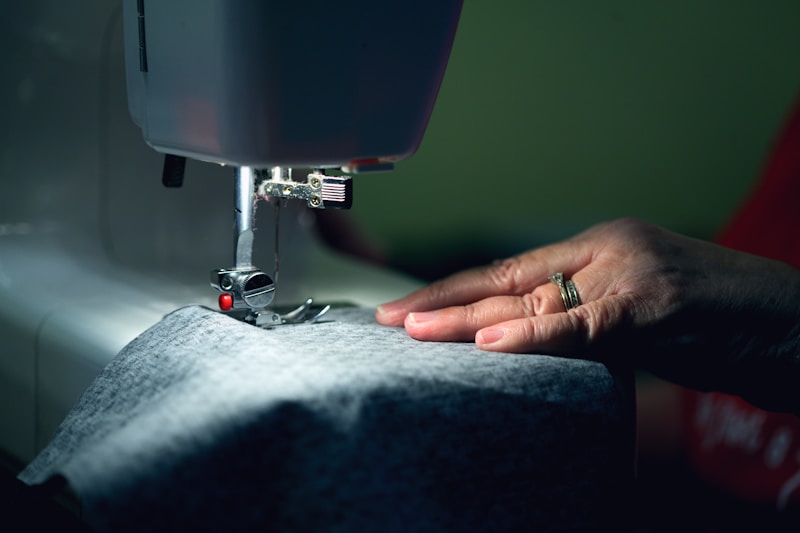Understanding the Role of Fabric Protectants: A Comprehensive Guide
Understanding the Role of Fabric Protectants
In today's world of advanced materials and fabric care products, understanding the role of fabric protectants has become essential for both consumers and professionals in the textile industry. From enhancing durability to offering stain resistance, fabric protectants play a crucial role in maintaining the appearance and longevity of various textiles. In this article, we will delve deep into what fabric protectants are, their benefits, and essential considerations when choosing the right product for your needs.
What Are Fabric Protectants?
Fabric protectants are specialized treatments applied to textiles to enhance their resistance to dirt, stains, and water. These treatments create a protective barrier on the surface of the fabric, repelling substances that could cause damage or discoloration. Typically, fabric protectants come in spray or liquid form and can be used on a variety of materials, including upholstery, clothing, and carpets.
How Do Fabric Protectants Work?
Fabric protectants work by altering the physical properties of the fibers in the fabric. Most commonly, they utilize a chemistry that allows the treated surface to resist absorbing liquids and repel oily stains. This ensures that spills can be wiped away easily and that everyday wear and dirt do not penetrate the fibers. The application process can vary, but it generally involves spraying or soaking the fabric with the protectant and allowing it to dry completely.

Benefits of Using Fabric Protectants
Utilizing fabric protectants comes with numerous advantages, including:
| Benefit | Description |
| Stain Resistance | Fabric protectants help prevent stains from setting in, making cleaning easier. |
| Extended Longevity | By protecting fabrics from damage, these products can extend the lifespan of your textiles. |
| Ease of Maintenance | With a protective layer, cleaning and maintenance become significantly easier. |
| Aesthetic Preservation | Fabric protectants help maintain the original color and look of your textiles. |
| Cost-Effective | Investing in protectants can save money in the long run by reducing the need for replacements. |
Common Misconceptions
Despite their notable benefits, there are several common misconceptions surrounding fabric protectants. Let's clarify some:
- Fabric protectants are water-repellents: While many protectants do repel water, they are not completely waterproof. It's important to understand the limits of these products.
- All fabric protectants are the same: Different products target various types of fabrics and offer different levels of protection. It's crucial to select the right one based on your fabric type.
- Once applied, protection lasts forever: Fabric protectants need to be reapplied after washing or exposure to certain elements, as their efficacy diminishes over time.
Choosing the Right Fabric Protectant
When considering fabric protectants, it’s important to take several factors into account:
1. Fabric Type
Different fabrics have different care requirements. For instance, upholstery fabrics often require more robust protectants compared to delicate materials like silk. Always check the product label to ensure it is suitable for your specific fabric type.
2. Nature of Use
Consider how the fabric will be used. Outdoor furniture, for instance, may need a more durable and weather-resistant protectant compared to indoor upholstery. Understanding where and how the fabric will be used can guide your choice effectively.
3. Environmental Considerations
Many consumers are now looking for eco-friendly or non-toxic fabric protectants. Look for products that highlight their green credentials, especially if you have children or pets at home.
How to Apply Fabric Protectants
Applying fabric protectants can be straightforward if you follow a few steps:
- Ensure the fabric is clean and dry before application.
- Apply the protectant evenly using a spray or brush, depending on the product's instructions.
- Allow the fabric to dry completely; this may take several hours.
- Consider applying a second coat for enhanced protection, particularly on high-use items.
- Always refer to the manufacturer's guidelines for best results and maintenance tips.
Conclusion: Key Takeaways
Understanding the role of fabric protectants is essential for anyone looking to maintain the quality and appearance of their textiles. By applying the right fabric protectant, you can significantly enhance the durability of materials, making cleaning easier and prolonging the life of your investments. Additionally, always read labels, consider your specific fabric needs, and keep in mind that reapplication is often necessary to maintain effectiveness. Whether you are protecting your favorite jacket or ensuring your living room furniture stands the test of time, carefully choosing and using fabric protectants can lead to lasting satisfaction.
Stay informed, choose wisely, and enjoy the lasting beauty of your textiles!